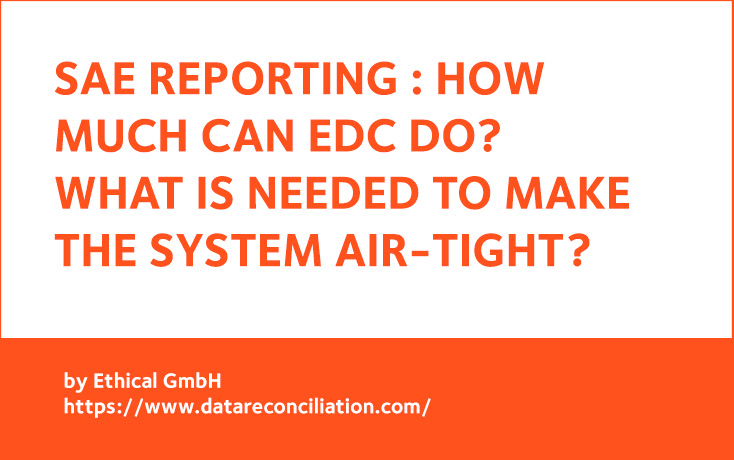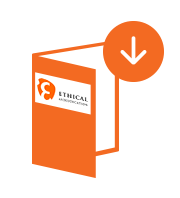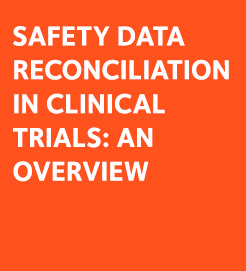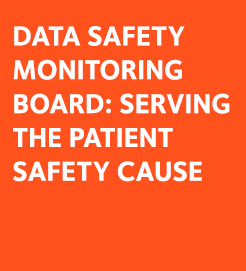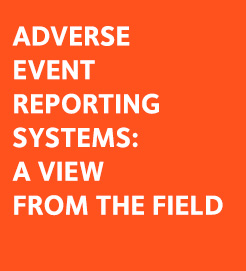In the process of collecting and documenting adverse events during a clinical trial, investigational sites primarily use the Electronic Data Capture (EDC) system to capture clinical information including safety data. EDC systems have some advantages: they incorporate the first wave of data verification and correction using automated and manual queries, and EDC data are easily monitored remotely by sponsor personnel and checked by monitors during field visits. However, EDC alone cannot guarantee 100% accuracy of SAE-related data and most such systems are agnostic of the safety database entries.
However, the reconciliation process is littered with roadblocks, delays, sometimes misunderstandings, and repetitions. From the investigational site point of view, the SAE data reconciliation process comes in addition to the verification procedures of the EDC and safety systems. Clear processes and good communication with sites are of paramount importance and will be supported using the right SAE data reconciliation software.
The verification procedure in Medidata Rave® and other EDC systems
Modern EDC systems incorporate several levels of data verification and mechanisms for correction starting with pre-set limitations in the data capture (e.g.: pre-defined ranges of acceptable numbers, drop-down lists with values to select from etc.). Following this first level, data are automatically compared and incompatibilities are flagged for resolution by the site. It is interesting to note that, in the past, this process was done on paper but, fundamentally, it was identical and the problems encountered were similar though much more time consuming.In spite of these obvious advances, automatic queries use standardized language that does not always adequately describe the discrepancy and trigger inadequate responses. Repetition of the question seldom solves the misunderstanding, so unresolved queries must be reviewed manually and new questions issued to the site with a more tailored explanation. In very well setup studies, 40% of the data need to be queried and the percentage quickly increases when the quality is not so perfect or the study is complex. Even after all the correction activities, a non-negligible percentage of erroneous data remains .
A great advantage of EDC is that data can be monitored remotely by medical experts and other headquarter-based staff allowing them to identify trends and issue new guidance for sites and monitors, occasionally even to make corrections to the EDC settings. SAE and AESI are flagged in the EDC systems and this provides a good first alert to the sponsor. However, this does not constitute a formal reporting of SAE. This is the role of the pharmacovigilance process.
Queries related to the Argus® or Safety Database
A distinct pharmacovigilance process takes care of the formal reporting of SAEs to health authorities. Separate software tools are required with their own quality checks and reporting mechanisms. The pharmacovigilance path includes an additional level of complexity as each case is followed up until final resolution. By the time site personnel has dealt with all the requests for clarifications and corrections, some of the data may have changed due to new information becoming available.The additional burden of SAE data reconciliation
Even assuming a very good organization with ongoing review and identification of the discrepancies at the sponsor site, another wave of queries arrives to the site, requiring to verify what was entered in each of the databases – the Medidata Rave®or EDC and the Argus® or Safety Database –, what was answered to the previous queries of each system and what remains to be corrected. Some of the questions are identical and some may be in contradiction to the initial ones. If the organization is not so perfect, the wave can become a tsunami near the database lock time. Investigators, even those familiar with clinical trials, can grow impatient.EDC can do (and does) a lot for clinical data quality. But it cannot do everything when it comes to safety data reconciliation. This is also true for the safety reporting tools. No matter how good they may be in their domain, questions will remain and reconciliation is necessary.
What can make the overall process air-tight?
Here are two tips that will help a clinical trial team secure a more efficient and easier SAE data reconciliation process:
- Train sites and field-based monitors to your company’s processes and ensure good communications between all stakeholders involved. Explaining the why’s and how’s, and opportunities for verbal explanations remain essential when things tend to get complicated.
- Make sure also to use the right SAE data reconciliation software. Ethical’s eReconciliation® integrates directly with EDCs such as Medidata Rave® System and Argus® or other Safety Databases allowing data managers and safety officers to quickly and accurately identify discrepancies. It is also equipped with operational tools supporting good communications between all stakeholders involved and an Audit Trail for GxP compliance.
________________________________________________________
1Quality control of validity of data collected in clinical trials. EORTC Study Group on Data Management (SGDM). K Vantongelen 1, N Rotmensz, E van der Schueren, Eur J Cancer Clin Oncol. 1989 Aug;25(8):1241-7.
Medidata RAVE® and ARGUS® are registered trademarks of their respective holders. The use of these trademarks in the article does not imply any affiliation with or endorsement by them.
DOWNLOAD NOW THE FREE SAE RECONCILIATION HANDBOOK
The Manual / Reference Book with all the topics related to the Safety Data Reconciliation Management.


